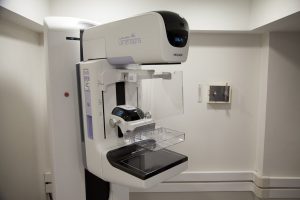It was not all that long ago that talking about women’s bodies and health was considered taboo, and a lot of healthcare was hard to access, or based on superstition. Fortunately, we have come a long way from taboos and superstitions with the help of changing attitudes towards women’s healthcare, as well as medical and scientific advancements. We’ve made incredible strides in the last few centuries and decades, from the first female doctor to the birth control pill – and this Women’s History Month we wanted to take a closer look at some of the key moments in the history of women’s healthcare.
1849: The First Female Doctor
Allow us to introduce you to the first female doctor, Elizabeth Blackwell, who earned her medical degree 173 years ago from New York’s Geneva Medical College, ranking first in her class. And despite facing many obstacles trying to make a living in a male-dominated medical system, she set up a small clinic of her own in 1853, which became known as the New York Infirmary for Women and Children. Then in 1868, she fulfilled a long-held dream when she opened the Women’s Medical College at the infirmary to help train more female doctors, since it was so difficult for women to get experience from their male counterparts.
1896: Menstrual Care
What did women do before the times of disposable tampons and pads? They had to be creative and make their own tampons and pads out of cloth, wool, and paper. But in 1896, that all changed when the first commercial menstrual care product in America was introduced: Lister’s Towels, a cotton sanitary napkin made by Johnson & Johnson. Unfortunately, it was not that successful because women did not want to be seen purchasing them, or anything that had to do with menstruation, for that matter. But then, in 1921, the first successful pad was finally introduced by the Kimberly-Clark company: Kotex.
The first disposable tampon was then introduced in 1933, after being patented by Dr. Earle Haas. That same year Haas sold his design and patent to a Denver businesswoman named Gertrude Tenderich, who founded the Tampax Sales Corporation. And women’s lives got just a little bit easier!
1914: All Hail The First Modern Bra
Before the bra was introduced, women engineered their own devices to support their breasts. They wore bands of animal skins and later wore incredibly uncomfortable corsets to enhance their shape. But that all changed in 1913, when New York City socialite Mary Phelps Jacob tried on a new sheer evening gown and saw that her tight corset poked out from underneath. So she ditched the corset and instead tied two silk handkerchiefs together with a ribbon- inventing the modern bra! In 1914, she patented her design and set up a business selling her bras, which she later sold to the Warner Brothers Corset Company.
1916: The First Birth Control Clinic
Margaret Sanger was most famous for her controversial and tireless advocacy for birth control in America. She saw firsthand the effects of women who were living in poverty having multiple children, the high infant and maternal mortality rates that resulted, as well as the pain caused by deaths from illegal abortions. So Sanger decided to try to change this, opening America’s first birth control clinic in Brooklyn in 1916. In 1921, she founded the American Birth Control League, which later became the Planned Parenthood Federation of America.
1960: The Birth of The Pill
In 1960, the FDA finally approved the sale of the first oral contraceptive, the birth control pill Enovid. Within two years, it was being taken by more than a million women in the United States.
1969: The Modern Mammogram
Before 1969, mammograms were performed with X-ray machines, which can produce high doses of radiation. Because many people were worried about the effects of being exposed to such high radiation, the mammography machine was invented, and became available around the world. Then in 2000, the FDA approved the first digital mammography unit, followed 11 years later by the approval of the first 3D breast imaging technology.
1977: The First Sports Bra
Can you imagine working out without a sports bra? Well not too long ago, that was your only choice. But in 1977, University of Vermont graduate student Lisa Lindahl got tired of not having any breast support while exercising. So, along with 2 friends, she came up with the idea of sewing 2 men’s jockstraps together, and viola- she came up with the prototype of the first sports bra, the Jogbra!
Women’s health has come a long way from what it was not that long ago. You might even remember the days before the sports bra, easily accessible birth control, or the modern mammogram machine- yikes, all that radiation! Thanks to all of these advances, and the health insurance that covers everything to keep us healthy, you can continue to take care of your health – and Medicare will cover most of the costs.
But Medicare only covers most, not all, of your medical expenses. So if you don’t have a Medicare Supplement Plan, we urge you to look into one, so you can not only save money but get more coverage! Medicare Supplement Plans will cover what Original Medicare does not, saving you hundreds of dollars a year, so you don’t have to worry about medical bills when getting your mammogram, or anything else needed to stay on top of your health. EZ’s agents work with the top-rated insurance companies in the nation and can compare plans in minutes for you at no cost. To get free instant quotes for plans that cover your current doctors, simply enter your zip code in the bar on the side, or to speak to a licensed agent, call 888-753-7207.




